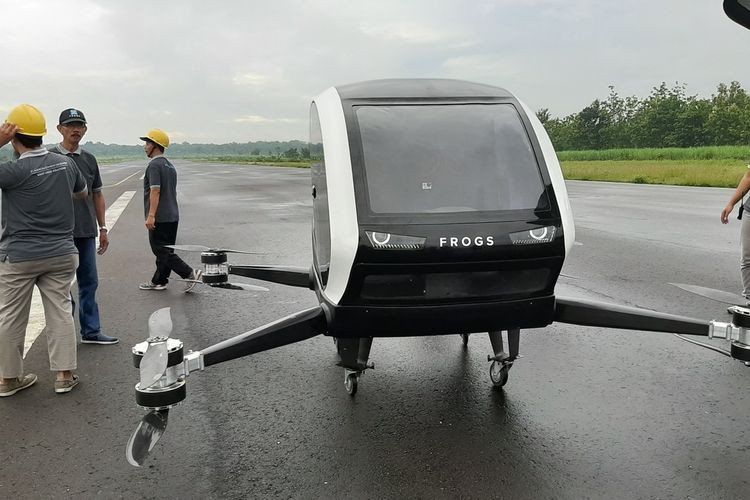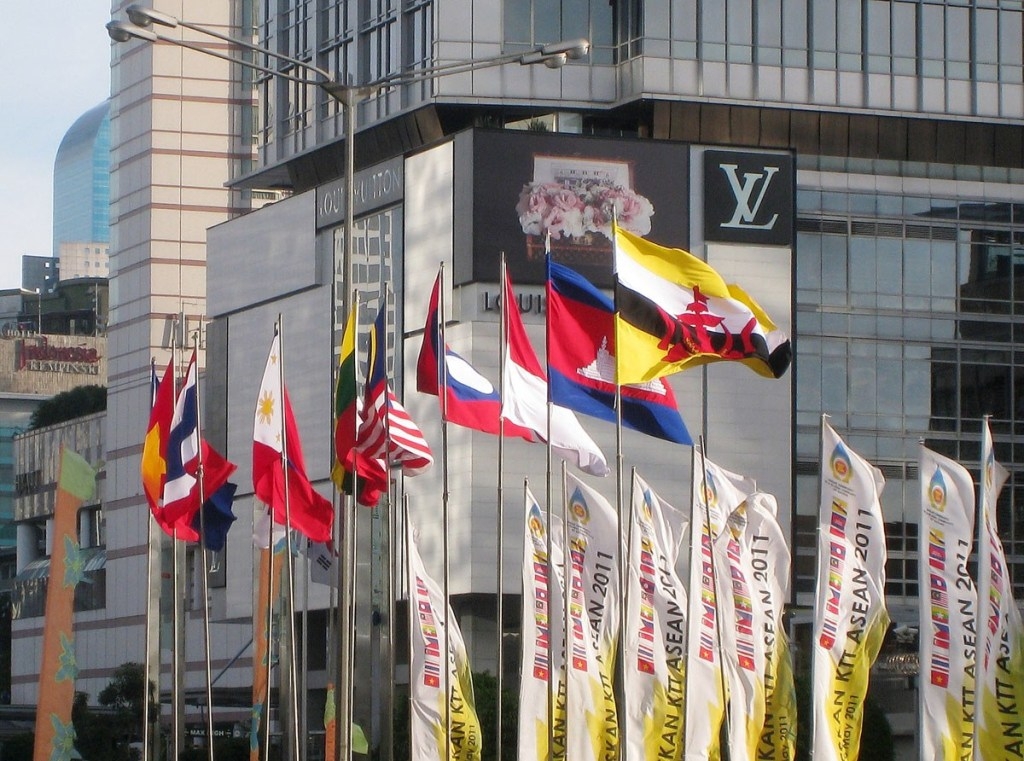First Indonesia’s electric taxi drone takes test flight
 |
| Yogyakarta-based startup Frogs Indonesia’s second generation of airborne electric taxis called the Frogs 282 waits to be tested at the Gading Airport in Gunungkidul regency on Saturday. (kompas.com/Markus Yuwono). |
The electric taxi floated a few centimeters above the ground during a series of trials on Saturday, after which some technicians landed the prototype to examine it.
Frogs Indonesia cofounder Asro Nasiri said the all-electric two-seater aircraft — designed to solve the traffic problems and reduce air pollution in the country's urban areas — could lift up to 200 kilograms.
"Frogs 282 means two passengers, eight motors and second generation," Asro said, as quoted by kompas.com on Saturday.
The company's chief technology official Dedi Satria Maulana said the test was done to detect any trouble in the airborne taxi and the trial results suggested improvements be done to the machine to cope with "a rather heavy air density" in Yogyakarta.
Developed over the past two years, the Frogs was built from a light, but with strong carbon fiber known for its high margin of safety. The prototype also boasted other safety features, such as a failsafe mechanism that allowed the motors to take over for each other should one fail midair.
Saturday’s test was undertaken to prepare for the prototype to be showcased at the upcoming 2020 Hannover Messe technology exhibition in Germany.
The exhibition was initially scheduled to take place in April. However, it had been postponed until July because of the global COVID-19 outbreak.
Video by Antara/ Indonesia
In February, UMG Idealab venture and investment partner Jefry Pratama had announced the cutting-edge technology, which was based on a quadcopter drone design, had been completed. The current version of the prototype already featured a fully functional passenger cabin, engine, rotors, and a battery as its main power source, he said.
Jefry went on to say that the overall structure of Frogs was built from a light, but with strong carbon fiber known for its high margin of safety. The prototype also boasted other safety features, such as a failsafe mechanism that allowed the motors within its engine to take over the other should one of them fail mid-air, he said.
Each and every component of the prototype had already been tested and had fulfilled safety requirements, he said, adding that multiple test flights of the aircraft had gone smoothly, showing that all systems were stable and well-synchronized.
Developed over the past two years, Frogs was designed as an alternative mode of transportation for remote areas throughout the country. The airborne taxi is meant to accommodate cargo and military equipment, as well as assist in emergency evacuations during disasters.
“We hope to finally be able to make it available for commercial use soon. It all depends on the regulations. As far as we know, there has yet to be any policy that regulates airborne electric taxis in Indonesia,” Jefry said.
Recommended
 World
World
US, China Conclude Trade Talks with Positive Outcome
 World
World
Nifty, Sensex jumped more than 2% in opening as India-Pakistan tensions ease
 World
World
Easing of US-China Tariffs: Markets React Positively, Experts Remain Cautious
 World
World
India strikes back at terrorists with Operation Sindoor
Popular article
 World
World
India sending Holy Relics of Lord Buddha to Vietnam a special gesture, has generated tremendous spiritual faith: Kiren Rijiju
 World
World
Why the India-US Sonobuoy Co-Production Agreement Matters
 World
World
Vietnam’s 50-year Reunification Celebration Garners Argentine Press’s Attention
 World
World







